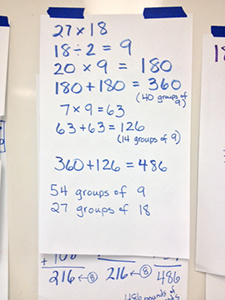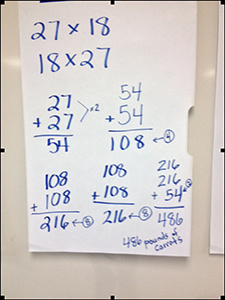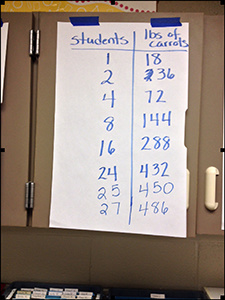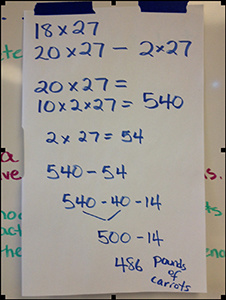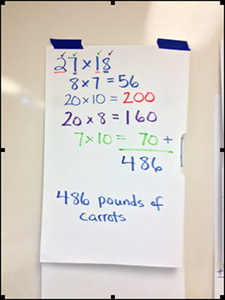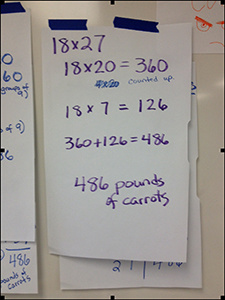The Importance of Problem Solving in the Math Classroom
 RoseMary Hunt
RoseMary Hunt
Math Teacher, Turtle Lake Elementary, Shoreview
Math Instructional Coach, Mounds View Schools
MCTM Region 4 Director
So how did Pythagoras come up with that theorem? Archimedes screw pump? Pascal and his triangle? “Necessity is the mother of invention.” True, but what about the human inclination for solving a puzzle or the observance of a pattern and wondering how far can it go.
When we think about math, really think about what mathematics is, we see patterns, relationships and structure in number, geometry and other branches as well. Growing up in a “traditional” math class where steps, procedures and rules were followed, I feel I was cheated. I was cheated out of the journey. I want to be the teacher I wish I had.
In the very first pages of NCTM’s Principles to Actions: Ensuring Mathematical Success for All, the lists of “Mathematics Teaching Practices” and the “Mathematical Practices” (that which we want students to acquire) provide the map for the journey on which we lead our students.
Let’s start with the student and the “Mathematical Practices” (p.8) that support problem solving:
1) Make sense of problems and persevere in solving them.
productive struggles
2) Construct viable arguments and critique the reasoning of others.
critical thinking skills
analysis
3) Model with mathematics.
symbolic representations
4) Look for and make use of structure.
what works and why
alternate methods/reasoning
5) Look for and express regularity in repeated reasoning.
patterns in number
patterns in thought
patterns in steps
We as teachers need to purposefully select problems that align with the practices we want students to develop; as well as align to the standards we want them to demonstrate and understand. The “Mathematics Teaching Practices” (p. 10) help guide us in OUR practice. In looking over the list, it is hard not to include all 8. However the ones that help promote conversation and critical thinking are:
1) Use and connect mathematical representations.
connect concrete with symbolic
deepen understanding
2) Facilitate meaningful mathematical discourse.
shared understanding
cooperative learning
analysis
argument
3) Pose purposeful questions.
assessment of student understanding
assessment of depth of student understanding
4) Support productive struggle in learning mathematics.
perseverance
5) Elicit and use evidence of student thinking.
next steps to take
The following is a problem that we worked on in my third grade math class. Students solved the problem using the method of their choice. As we gathered to discuss strategies to a solution, they were excited to share their ideas and were engaged in analyzing their classmates’ thoughts. At this point in the school year, we had not worked on formal ways to multiply two 2-digit numbers. Their work and explanations were based on their work on decomposition of numbers, finding patterns, and their number sense. I was the recorder as they described what they thinking. See if you can identify any of the practices listed above in their presentations.
Problem:

Solutions:
